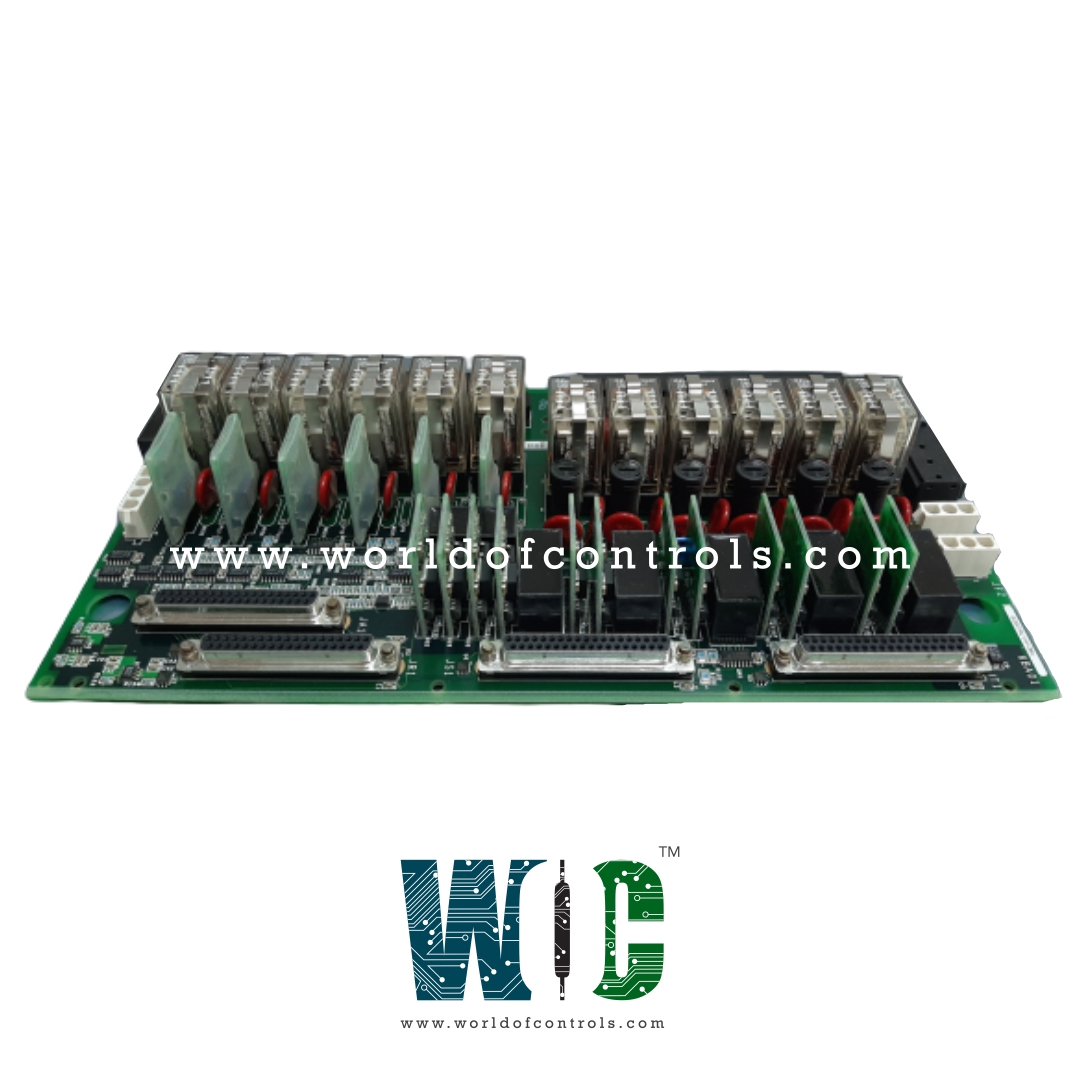
World Of Controls understands the criticality of your requirement and works towards reducing the lead time as much as possible.
IS200TRLYH1D - Relay Output with Coil Sensing Terminal Board is available in stock which ships the same day.
IS200TRLYH1D - Relay Output with Coil Sensing Terminal Board comes in UNUSED as well as REBUILT condition.
To avail our best deals for IS200TRLYH1D - Relay Output with Coil Sensing Terminal Board, contact us and we will get back to you within 24 hours.
SPECIFICATIONS:
Part Number: IS200TRLYH1D
Manufacturer: General Electric
Series: Mark VIe
Number of relay channels: 12
Rated voltage on relays: 125 V dc
Dimensions: 17.8 cm wide x 33.02 cm high
Operating Temperature: -30 to + 65oC
Controller and I/O module Redundancy: Simplex
Internal operating system: QNX
Power Consumption: 4 W
Analog outputs: 0 to 10 V
Configuration Software: ToolboxST
Country of Manufacture: United States (USA)
Availability: In Stock
Manual: GEH-6421 M
FUNCTIONAL DESCRIPTION:
IS200TRLYH1D is a Relay Output with Coil Sensing Terminal Board manufactured and designed by General Electric as part of the Mark VIe Series used in GE Distributed Control Systems. The Relay Output with coil sensing (TRLYH1B) terminal board holds 12 plug-in magnetic relays. The first six relay circuits are configured by jumpers for either dry, Form-C contact outputs, or to drive external solenoids. A standard 125 V DC or 115/230 V AC source, or an optional 24 V DC source with individual jumper selectable fuses and on-board suppression, can be provided for field solenoid power. The next five relays (7-11) are unpowered isolated Form-C contacts. Output 12 is an isolated Form-C contact, used for special applications such as ignition transformers. The coil-sensing terminal board usually facilitates the connection of wires or terminals for the relay's coil. It allows the relay to sense the status of the coil, which can be crucial for monitoring or controlling electrical circuits in various applications.
Relay: This is the primary component that enables the control of one electrical circuit by opening and closing contacts in another circuit. It typically consists of a coil (that requires a certain voltage to actuate) and one or more sets of contacts.
Output Contacts: These are the switch contacts within the relay that change their state (open or closed) when the coil is energized or de-energized. These contacts are used to control other devices or circuits.
Coil Sensing Terminal Board: This board provides connection points or terminals for the wires that power the relay coil. Additionally, it might have other terminals for sensing the state or voltage across the coil to monitor its status.
WOC has the largest stock of GE Distributed Control System Replacement Parts. We can also repair your faulty boards. WORLD OF CONTROLS can also supply unused and rebuilt backed-up with a warranty. Our team of experts is available round the clock to support your OEM needs. Our team of experts at WOC is happy to assist you with any of your automation requirements. For pricing and availability on any parts and repairs, kindly get in touch with our team by phone or email.
What is a relay output with a coil-sensing terminal board?
A relay output with a coil sensing terminal board comprises a relay, a device used to control electrical circuits, with an additional terminal board for sensing the status or conditions of the relay coil.
How does a relay work with a coil-sensing terminal board?
The relay is typically used to control the opening and closing of electrical circuits. The coil-sensing terminal board enables the connection of wires for the relay coil and may include monitoring components to sense the voltage, current, or status of the coil.
What is the purpose of the coil-sensing terminal board?
The terminal board facilitates the connection of the relay coil and provides a means to monitor the coil's status. This monitoring can be crucial for diagnosing issues, ensuring proper operation, or integrating the relay into a broader control system.